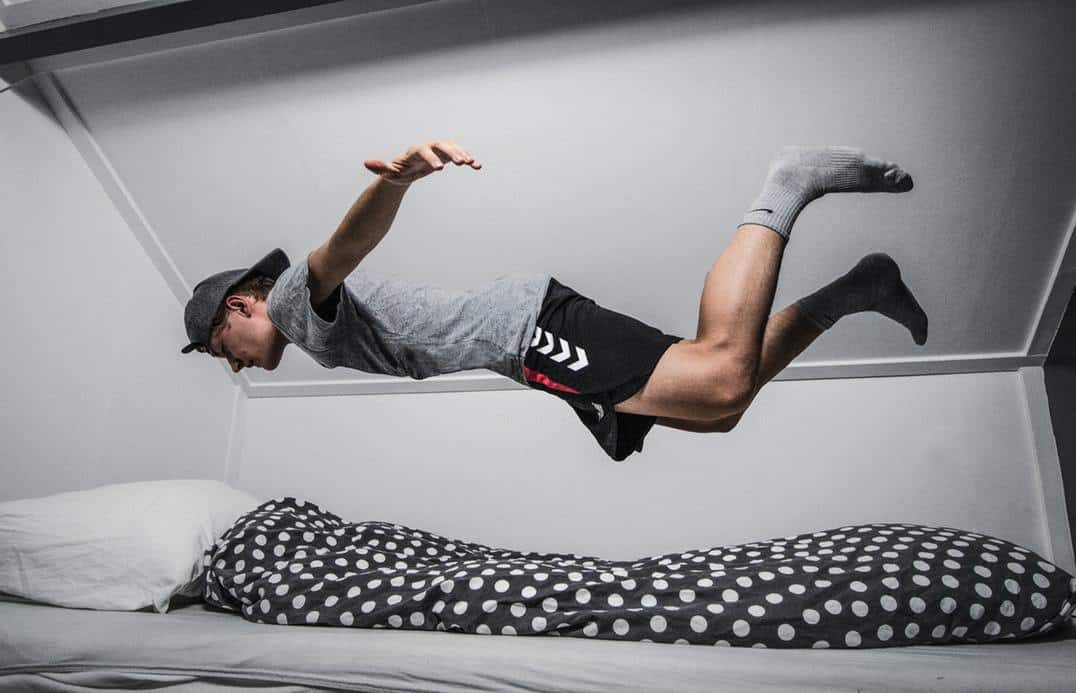Dreams — Mysterious, bewildering, eye-opening and sometimes a nightmarish living hell. Dreams are all that and much more.
Here are 20 amazing facts about dreams that you might have never heard about:
Fact #1: You can’t read while dreaming, or tell the time
If you are unsure whether you are dreaming or not, try reading something. The vast majority of people are incapable of reading in their dreams.
The same goes for clocks: each time you look at a clock it will tell a different time and the hands on the clock won’t appear to be moving as reported by lucid dreamers.
Fact #2: Lucid dreaming
There is a whole subculture of people practicing what is called lucid or conscious dreaming. Using various techniques, these people have supposedly learned to assume control of their dreams and do amazing things like flying, passing through walls, and traveling to different dimensions or even back in time.
Fact #3: Inventions inspired by dreams
Dreams are responsible for many of the greatest inventions of mankind. A few examples include:
- The idea for Google -Larry Page
- Alternating current generator -Tesla
- DNA’s double helix spiral form -James Watson
- The sewing machine -Elias Howe
- Periodic table -Dimitri Mendeleyev
…and many, many more.
Fact #4: Premonition dreams
There are some astounding cases where people actually dreamt about things which happened to them later, in the exact same ways they dreamed about.
You could say they got a glimpse of the future, or it might have just been coincidence. The fact remains that this is some seriously interesting and bizarre phenomena. Some of the most famous premonition dreams include:
- Abraham Lincoln dreamt of His Assassination
- Many of the victims of 9/11 had dreams warning them about the catastrophe
- Mark Twain’s dream of his brother’s demise
- 19 verified precognitive dreams about the Titanic catastrophe
Fact #5: Sleep paralysis
Hell is real and it is called sleep paralysis. It’s the stuff of true nightmares. I’ve been a sleep paralysis sufferer as a kid and I can attest to how truly horrible it is.
Two characteristics of sleep paralysis are the inability to move (hence paralysis) and a sense of an extremely evil presence in the room with you. It doesn’t feel like a dream, but 100% real. Studies show that during an attack, sleep paralysis sufferers show an overwhelming amygdala activity. The amygdala is responsible for the “fight or flight” instinct and the emotions of fear, terror and anxiety. Enough said!
Fact #6: REM sleep disorder
In the state of REM (rapid-eye-movement) stage of your sleep your body is normally paralyzed. In rare cases, however, people act out their dreams. These have resulted in broken arms, legs, broken furniture, and in at least one reported case, a house burnt down.
Fact #7: Sexual dreams
The very scientifically-named “nocturnal penile tumescence” is a very well documented phenomena. In laymen’s term, it simply means that you get a stiffy while you sleep. Actually, studies indicate that men get up to 20 erections per dream.
Fact #8: Unbelievable sleepwalkers
Sleepwalking is a very rare and potentially dangerous sleep disorder. It is an extreme form of REM sleep disorder, and these people don’t just act out their dreams, but go on real adventures at night.
Lee Hadwin is a nurse by profession, but in his dreams he is an artist. Literally. He “sleepdraws” gorgeous portraits, of which he has no recollection afterwards. Strange sleepwalking “adventures” include:
- A woman having sex with strangers while sleepwalking
- A man who drove 22 miles and killed his cousin while sleepwalking
- A sleepwalker who walked out of the window from the third floor, and barely survived
Fact #9: Dream drug
There are actually people who like dreaming and dreams so much that they never want to wake up. They want to continue on dreaming even during the day, so they take an illegal and extremely potent hallucinogenic drug called Dimethyltryptamine. It is actually only an isolated and synthetic form of the chemical our brains produce naturally during dreaming.
Fact #10 Dream-catcher
The dream-catcher is one of the most well-known Native American symbols. It is a loose web or webs woven around a hoop and decorated with sacred objects meant to protect against nightmares.
Fact #11: Increased brain activity
You would associate sleeping with peace and quiet, but actually our brains are more active during sleep than during the day.
Fact #12: Creativity and dreams
As we mentioned before, dreams are responsible for inventions, great artworks and are generally just incredibly interesting. They are also “recharging” our creativity.
Scientists also say that keeping a dream diary helps with creativity.
In rare cases of REM disorder, people actually don’t dream at all. These people suffer from significantly decreased creativity and perform badly at tasks requiring creative problem solving.
Fact #13: Pets dream too
Our animal companions dream as well. Watch a dog or a cat sleep and you can see that they are moving their paws and making noises like they were chasing something. Go get ’em buddy!
Fact #14: You always dream—you just don’t remember it
Many people claim that they don’t dream at all, but that’s not true: we all dream, but up to 60% of people don’t remember their dreams at all.
Fact #15: Blind people dream too
Blind people who were not born blind see images in their dreams but people who were born blind don’t see anything at all. They still dream, and their dreams are just as intense and interesting, but they involve the other senses beside sight.
Fact #16: In your dreams, you only see faces that you already know
It is proven that in dreams, we can only see faces that we have seen in real life before. So beware: that scary-looking old lady next to you on the bus might as well be in your next nightmare.
Fact #17: Dreams tend to be negative
Surprisingly, dreams are more often negative than positive. The three most widely reported emotions felt during dreaming are anger, sadness and fear.
Fact #18: Multiple dreams per night
You can have up to seven different dreams per night depending on how many REM cycles you have. We only dream during the REM period of sleep, and the average person dreams one to two hours every night.
Fact #19: Gender differences
Interestingly, 70% of all the characters in a man’s dream are other men, but women’s dream contain an equal amount of women and men. Also men’s dreams contain a lot more aggression. Both women and men dream about sexual themes equally often.
Fact #20: Not everyone dreams in color
As much as 12% of people only dream in black and white.






Comments
Post a Comment